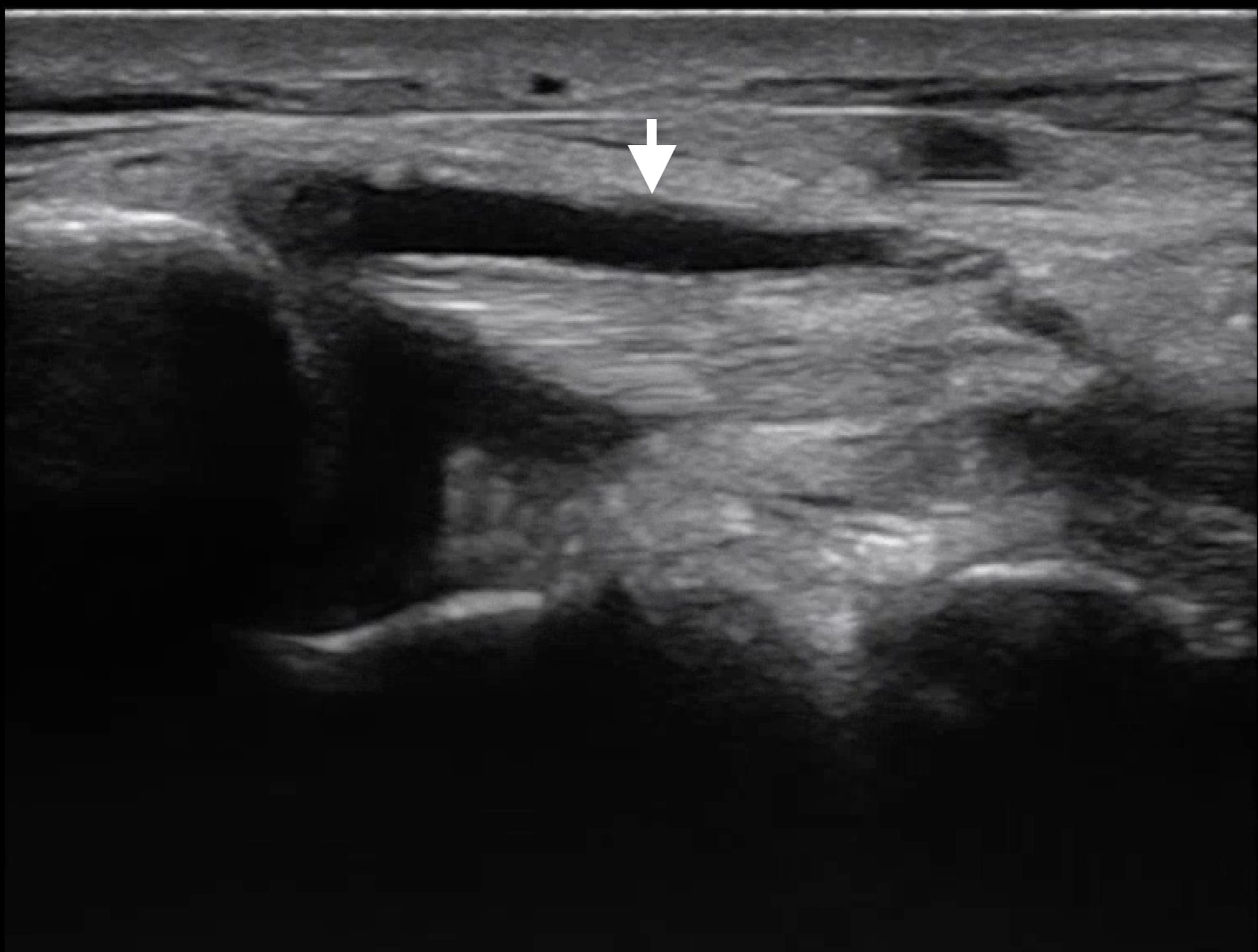HPI
A 58-year-old male presents with decreased vision in the left eye for 4 days. He says he is only able to see shadows through the left eye. Vital signs are within normal limits. Physical exam reveals a fixed pupil in the left eye with significantly decreased visual acuity.
Ultrasound
POCUS reveals complete retinal detachment and posterior lens dislocation (arrow) in the affected eye.
Scanning technique
Use a high-frequency linear probe
Avoid excessive pressure on the eye
Do not perform ocular ultrasound if there is suspicion for globe rupture
Lens dislocation on ultrasound
Subluxation is characterized by deviation of one side of the lens where it has separated from the iris
In complete dislocation, the lens can be found within the posterior chamber or vitreous body moving freely with eye movements
Dislocation into the anterior chamber is also possible
Ocular ultrasound is highly accurate for diagnosing lens dislocation, with a sensitivity of 96.8% and specificity of 99.4% compared to CT imaging
Case Conclusion
This patient was transferred to Kings County for ophthalmology evaluation.
References
Happy scanning!



